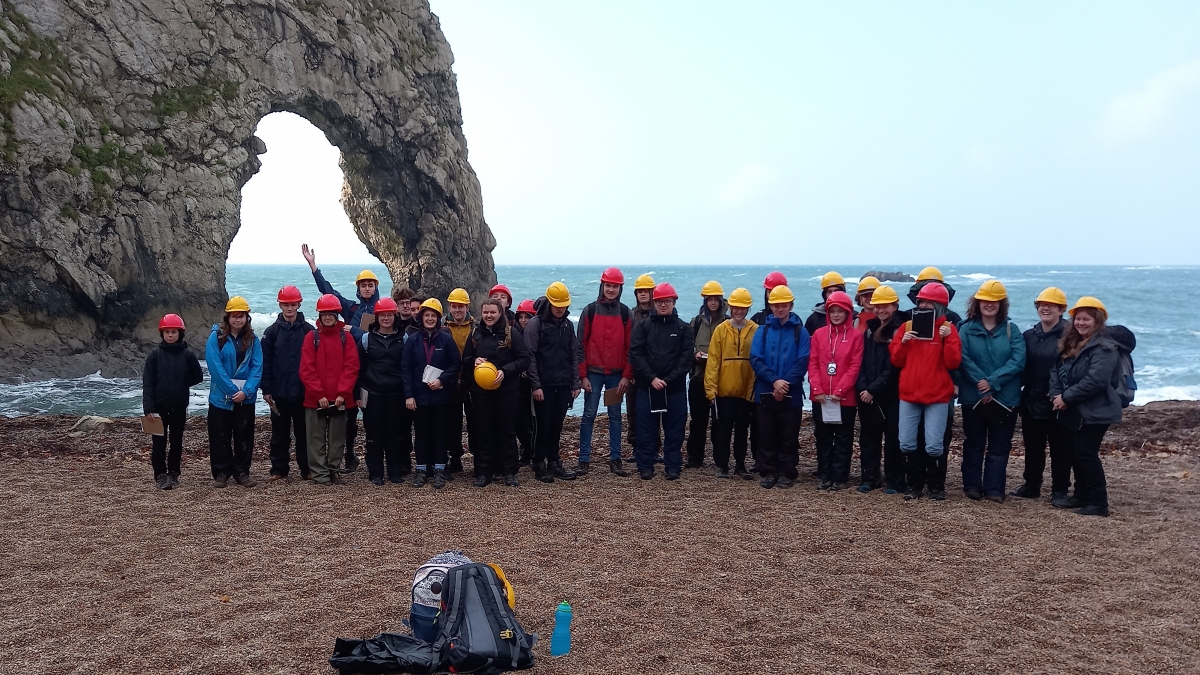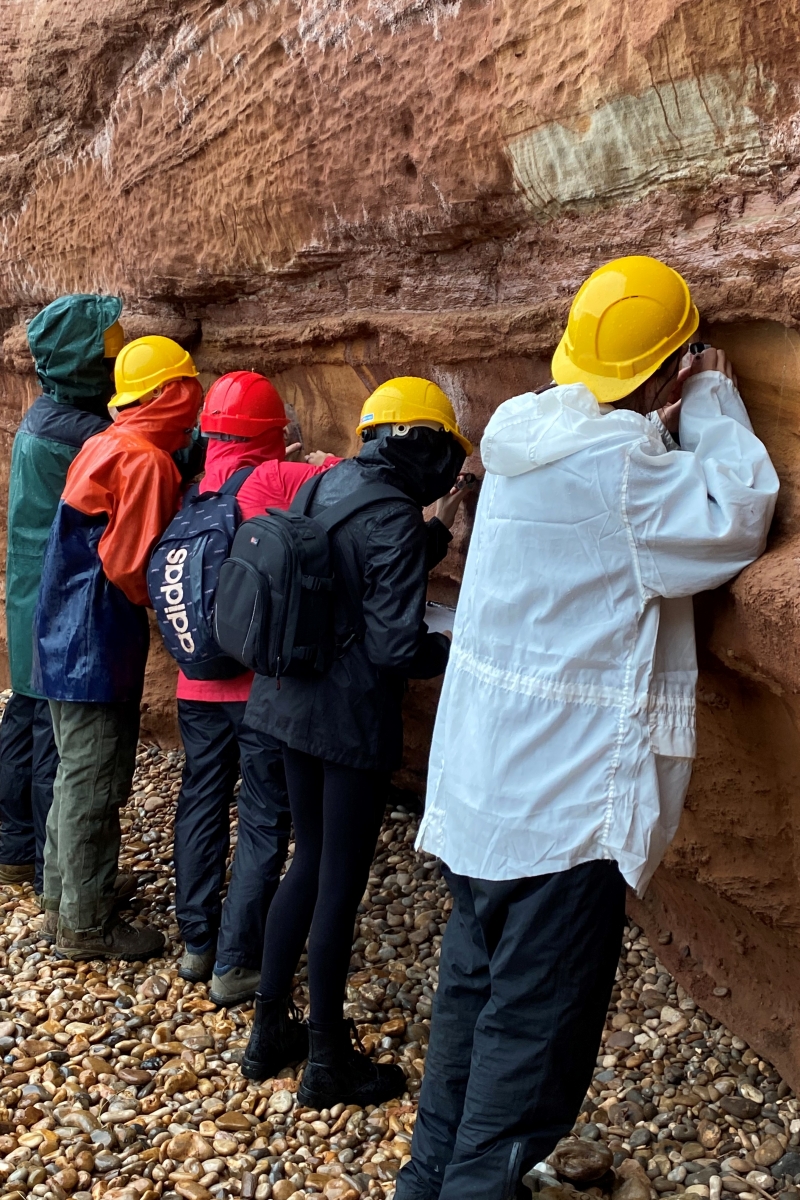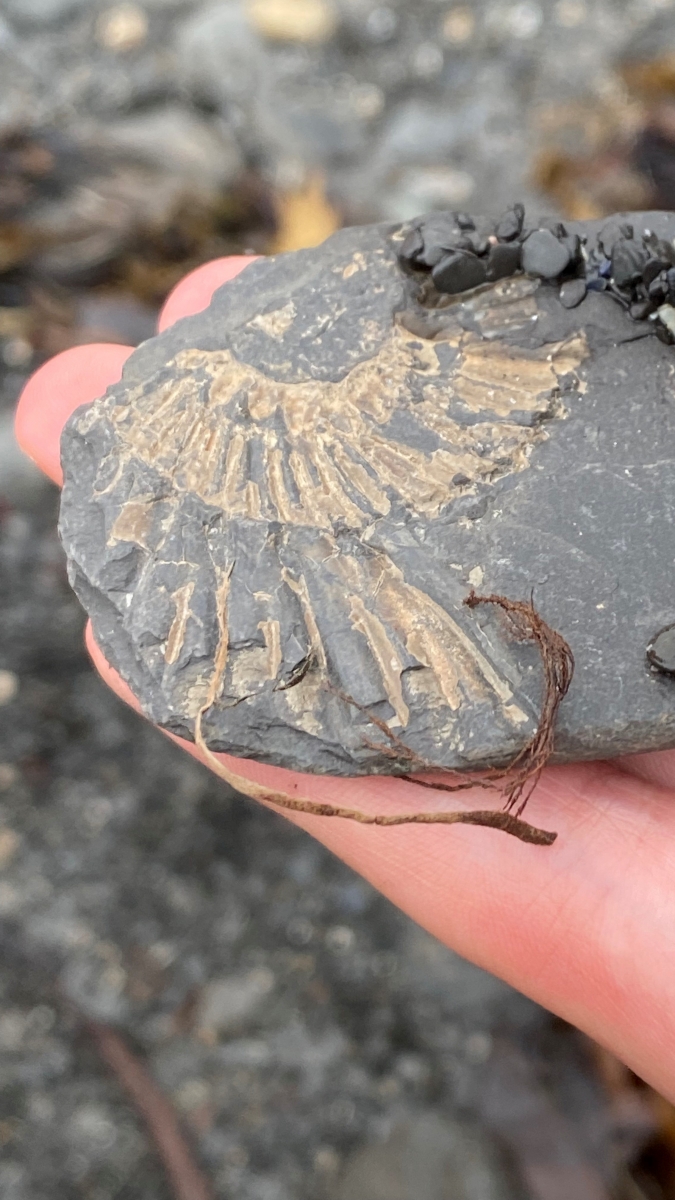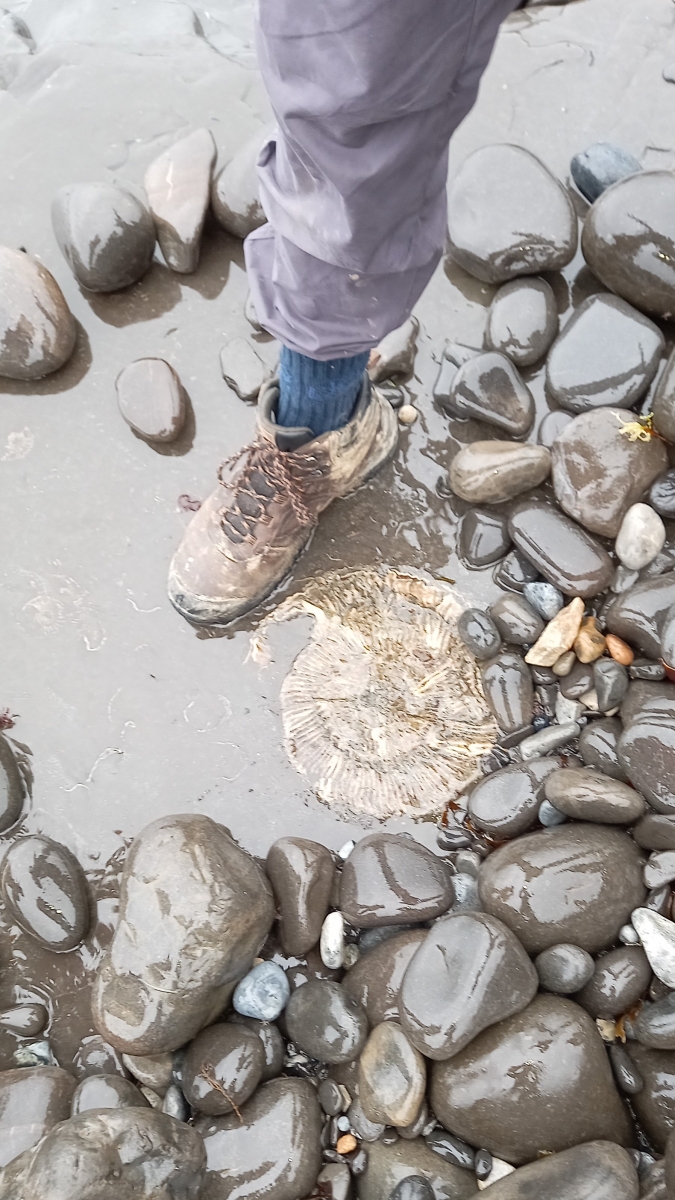A Level Geology students embark on trip to Jurassic coast
On Monday 18th October 2021, in torrential rain, 30 A Level Geology students set off on a three-day residential trip to the Jurassic Coast in Dorset.

Students made their first stop enroute at Ladram Bay, to sample the underlying Triassic. The students discovered that the UK was situated in the Southern Desert Belt, slowly drifting northward, as they identified large scale cross-bedding in desert sandstone. A recent rock fall gave excellent additional information and spirits were not crushed by the horrendous weather.
Students were able to practice a number of field skills, including identification of sedimentary structures, use of hand lenses and grain size charts for textural analysis, compass clinometer use for palaeocurrent direction, graphic log production and with the wonders of ‘rite-in-the-rain’ waterproof paper, field sketching.

Students looking at grain texture at Ladram Bay
The second stop of the trip was at Horn Park Quarry near Beaminster to see and sketch the Jurassic fossil assemblages and in particular, the sequence of incredibly well-preserved ammonites in the inferior oolite.
The last stop on day one, for field work, was a visit to the Bridport Sands at West Bay, a hugely important site for the second year students as it ties in with their economic geology (oil & gas), but equally important for the first year students who have just learned about porosity and cementation in the classroom. It also allows visualisation of the effects of weathering and erosion, and process of bioturbation.
Having arrived at the accommodation, Bid and Alistair from the Beaminster Museum very kindly brought over a series of fossil boxes containing the full sequence of ammonites and other fossils from Horn Park Quarry for the students to sketch in the warm and dry.
The self-catering facilities at the accommodation also enabled the students to learn some useful skills for the next step of their education at University. Students had to practice team work to get everyone through the small kitchen and some very impressive culinary skills were witnessed.
Day two took the students to Durdle Door and Lulworth Cove, with very little improvement in the weather. The sun did appear in short bursts and students made hay whilst it shone. Their primary goal was to produce a graphic log of a lateral section at Durdle Door, from the Jurassic Portland Limestone in the cliffs, through the Greensand and into the Cretaceous Chalk. Other tasks were to identify sed. structures and produce full rock descriptions.
The second stop of day two, Kimmeridge Bay, was an opportunity for students to measure joint trends to produce rose diagrams, examine the oil shales, pick out the large scale syncline/anticline folding, practice their fault terminology and determine fault sense on a large normal fault by using fault drag.

Kimmeridge Bay ammonites

Last stop of day two, a little fossil hunting at Bowleaze Cove to polish the students’ obvservational skills. Day three began with a look at a fossilized tree, in the carpark outside the Heights Hotel, near King Barrow Quarry on the Isle of Portland.
A short walk found students in King Barrow Quarry, standing on the fossil forest horizon at the top of the stratigraphic sequence. The students were tasked with producing a graphic log, sketching any interesting structural, sedimentary or biological features, and identifying the environments of deposition.
The last stop of day three took students on a fossil hunting walk to Black Ven and an examination of the Blue Lias at Church Cliff beach, Lyme Regis. Various fossils were identified, including ammonites, belemnites, bivalves, brachiopods and crinoids. Some excellent pyritised ammonites were particularly prized by the students. One student broke open a clast and found both part and counterpart of an ammonite.
Finally, at Church Cliff beach, the students examined the strata, identifying the changing palaeoenvironments (cyclical changes in sea depth giving interbedded shales) at the base of the Jurassic and were able to discuss this in context with Milankovitch Cycles. This also gave students the opportunity to recap the sites that they had visited and place them on the geological column.
